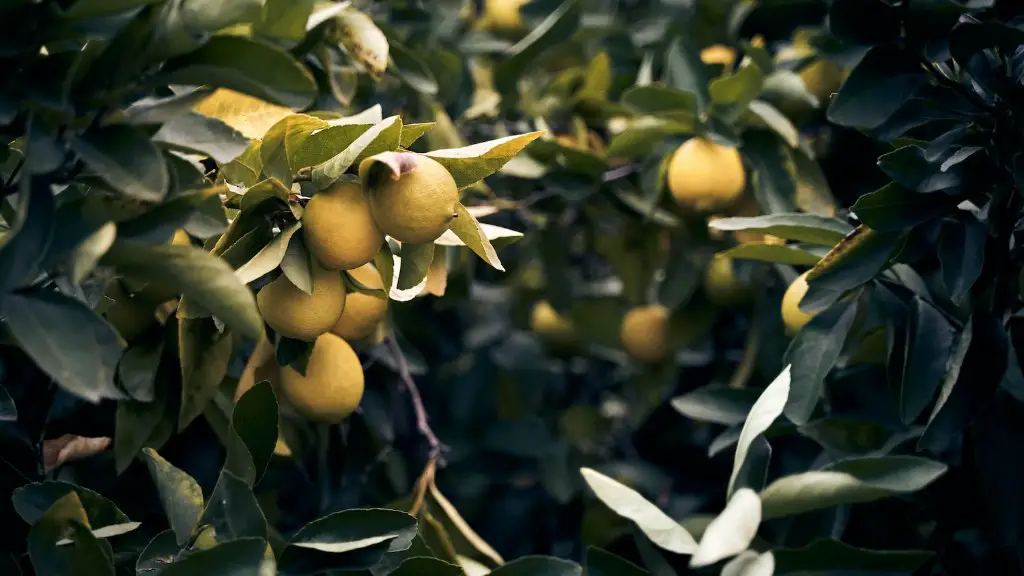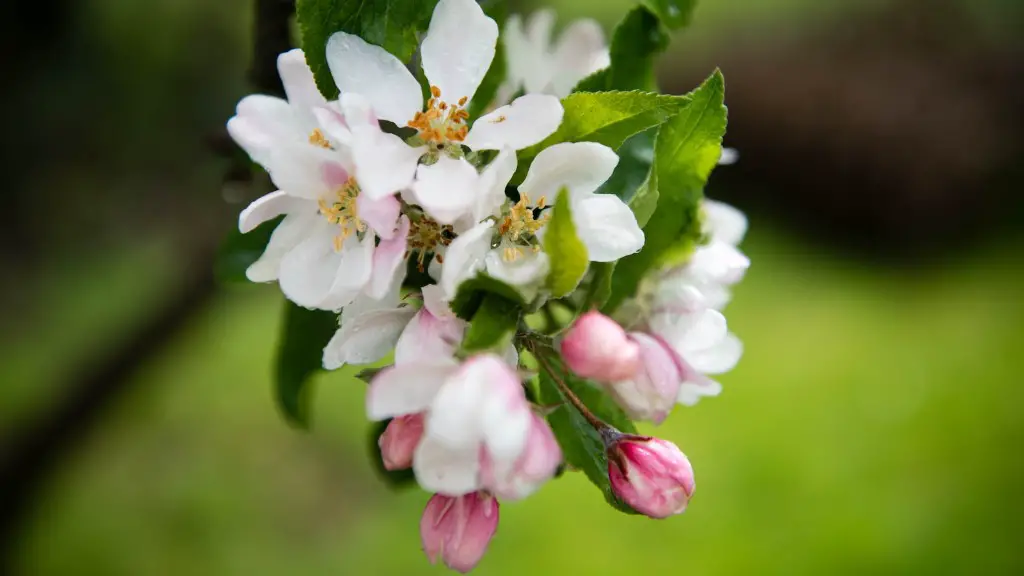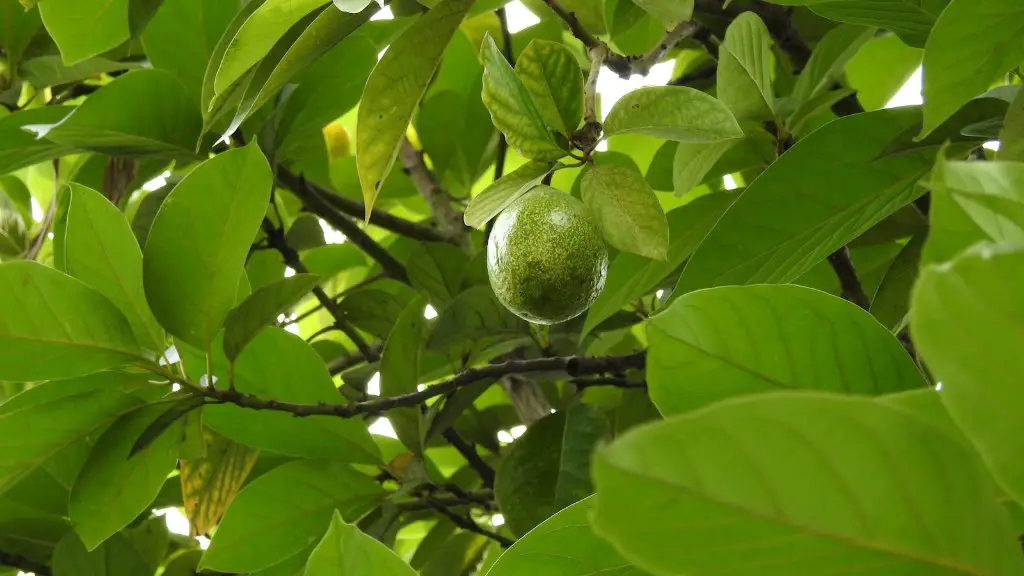The presence of scale on a lemon tree is a common problem and can be an unsightly sight. While scale is considered harmless in low numbers, if not properly controlled, it can have an impact on the health and vigor of the tree. When dealing with scale, it is important to act quickly and to use effective, gentle treatments. Here are some tips on how to get rid of the scale on a lemon tree naturally.
The first step for getting rid of scale is to prune the infected branches of the tree. Pruning will help ensure that all of the scale is removed, as any remaining scales will quickly reproduce, making the problem even worse. To prune, cut off the affected branches of the tree, making sure not to damage healthy branches when doing so. After pruning, dispose of the cut branches to prevent the scale from spreading.
Next, use soaps and oils to help provide more direct control of the scale. Horticultural soaps and neem oils are effective ways to help suppress existing scales. Spraying these solutions onto the tree can help kill the scale while not causing any damage to the tree itself. Be sure to follow label instructions and use protective gear when handling these chemicals.
Another effective way to control scale is through the use of beneficial insects. Bugs such as ladybugs and green lacewings can help control small populations of scale but usually can’t handle larger infestations. To use these insects, purchase them from a local nursery and release them near the infected area. They will feed on the scale and help control their numbers.
In addition to the above methods, a preventative management strategy is important for keeping scale under control. This includes keeping the foliage healthy and hydrated, as this helps reduce the likelihood of scales congregating on vulnerable areas. Additionally, keeping the area around the tree free of debris and detritus can also help discourage scale from taking hold.
Finally, horticultural oils are also used to help remove existing scales. These oils will help smother the scales, killing them while not causing any damage to the tree itself. Make sure to follow instructions and wear protective gear when spraying horticultural oils.
Remedies
For individual scales, pouring rubbing alcohol directly onto the affected area can work to help dissolve the scales. Furthermore, using a cotton swab dipped in alcohol also provides a good way to treat individual scales. As a general deterrent, spraying a mixture of rubbing alcohol and water onto the tree can help keep the scales away.
A remedy that has been found to effective against a variety of soft bodied insects, including scale is a mixture of mineral oil and liquid dish soap. This mixture can be sprayed on the tree and left to sit for several days, providing a degree of control over the population. Mineral oil can also be combined with dormant oil for a double dose of protection.
Another remedy that is utilized in scale control is the use of horticultural oils, such as summer and winter oils. These oils work to suffocate the scale and can be used in combination with soap and water. Make sure to use the correct concentration of oil and follow directions when applying it to the tree.
Finally, introducing G/M bacteria or beneficial nematodes into the soil near the tree, or even onto the tree itself can help provide control. These organisms feed on the scale and, when used properly, can provide a degree of control over the situation.
Other Measurements
The first step in scaling the problem is to make sure all affected branches of the tree are appropriately pruned. This will help reduce the overall population and help keep it from rapidly increasing. Other measures, such as keeping the foliage healthy, hydrated, and free of debris can also help reduce the likelihood of scale taking hold.
In addition to pruning, introducing beneficial bugs such as ladybugs and green lacewings can also be helpful in controlling populations of scale. These insects can be introduced into the affected area and will help keep scale levels low. Ensure the bugs are introduced into the area where the scale is located.
For insecticides treatments, horticultural soaps and neem oils can be a great help. These products can be used to suppress and help manage scale populations. As always, make sure to read the label instructions and use proper safety equipment when using these chemicals.
Finally, for spot treatments, use rubbing alcohol and mineral oil mixtures to help dissolve and suffocate scales. These products can provide spot treatments and may help reduce individual scales. As always, make sure to use the instructions and safety gear when handling these chemicals.
Preventative Measures
The best way to avoid scale on a lemon tree is to practice preventative management. Lime sulfur, dormant oils, and Neem oils can be used before scale appears, acting as a defense against them. This can help reduce the overall risk of an infestation and limit the need for more aggressive treatments.
Another preventative measure that can be utilized is the use of horticulture oils. These are generally sprayed on trees before potential infestations occur and can provide protection against scale. Again, make sure to follow label instructions and wear protective gear when using these chemicals.
Finally, proper pruning can help prevent scale from taking hold. Pruning will remove any stressed areas and make the tree less vulnerable to scale attack. Pruning should be done periodically to ensure healthy and vigorous growth in the tree.
Monitoring
The most effective way to detect scale on a lemon tree is to conduct regular monitoring. Inspect the tree periodically for signs of scale such as uncharacteristic bumps, pebble-like particles, and honeydew secretions. If any of these signs are seen, take the appropriate steps to control the problem.
Another way to detect scale is to rely on other beneficial bugs to detect infestations. Ladybugs, lacewings, and other beneficial insects can help identify problem areas before they become major infestations. Introducing these insects into the affected areas can be helpful in controlling scale and alerting to potential problems before they get out of hand.
Finally, you can also combine visual monitoring with testing procedures. Samples of tree bark can be taken and examined under a microscope to identify the presence of scale. This can help provide an early warning system and help identify any problem areas before they become infestations.




